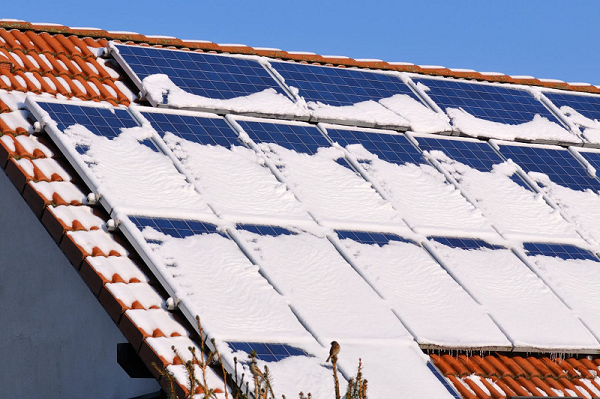
Everyone who at least once helped to “light up” a car battery that has sat down from a strong cold knows that frost and electricity do not combine. However, the research company Nanotech Energy came up with a way to extract electricity from snow. A report on this appeared in Nano Energy magazine in June 2019, but as winter approaches, the topic becomes as relevant as possible.
Back in the 1960s, scientists noticed that snow has an interesting property: it carries a positive charge. Accordingly, when interacting with a material carrying a negative charge, energy can be extracted from snow. Researchers from the University of California at Los Angeles (UCLA) took up this feature by creating a small silicone sensor generator capable of receiving electricity directly from the snow.
“The snow already has a charge, and we thought, why not take another material with the opposite charge and try to create electricity?” - Maher El-Kadi, technical director of the research company Nanotech Energy.
The device is called Snow TENG (snow triboelectric nanogenerator). As the name implies, it works due to the triboelectric effect (the appearance of electric charges in a material as a result of friction). Such devices are used to create low-power generators that receive energy from body movements, touching the surface or steps of a person on the floor.

The UCLA team secured the device to the soles of boots and bicycle tires
Why is the device silicone? Researchers tested various materials, including Teflon and aluminum foil. But silicone was more effective. This cheap material handled electron capture best.
Snow TENG is easy to make with a 3D printer. A layer of silicone is applied to a plastic electrode that can “capture” static electricity. The finished device is durable, flexible, waterproof and lightweight. However, it does not require any additional batteries. Given that silicone is at the core of the technology, Snow TENG can be turned into a transparent, waterproof spray.
This is an interesting opportunity, because then it can be applied to solar panels so that they can work in remote snowy areas and generate energy even in a snowstorm. Snow TENG can be used to create non-volatile weather stations. Or even cover them with the walls of buildings. This, on the one hand, will increase the level of waterproofing, and on the other hand, during a snowfall, the building will become a huge electric generator.

Enough energy to recharge the arctic weather station or smartwatch
Where is the catch?
A fly in the ointment, of course, is. The problem is the low specific power of the device, which is 0.2 mW per square meter. That is, it is pointless to connect Snow TENG directly to the mains. But technology is quite suitable for powering small devices. So it is likely that wearable electronics for winter sports will soon appear, capable of recharging from the movement of skis or boots in the snow.